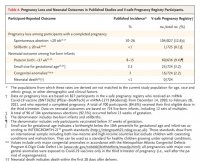SIAP - this is pretty crazy but not really unexpected
Experimental Assessment of Carbon Dioxide Content in Inhaled Air With or Without Face Masks in Healthy Children
Many governments have made nose and mouth covering or face masks compulsory for schoolchildren. The evidence base for this is weak.
1,
2 The question whether nose and mouth covering increases carbon dioxide in inhaled air is crucial. A large-scale survey
3 in Germany of adverse effects in parents and children using data of 25 930 children has shown that 68% of the participating children had problems when wearing nose and mouth coverings.
The normal content of carbon dioxide in the open is about 0.04% by volume (ie, 400 ppm). A level of 0.2% by volume or 2000 ppm is the limit for closed rooms according to the German Federal Environmental Office, and everything beyond this level is unacceptable.
4
We measured means (SDs) between 13 120 (384) and 13 910 (374) ppm of carbon dioxide in inhaled air under surgical and filtering facepiece 2 (FFP2) masks, which is higher than what is already deemed unacceptable by the German Federal Environmental Office by a factor of 6. This was a value reached after 3 minutes of measurement. Children under normal conditions in schools wear such masks for a mean of 270 (interquartile range, 120-390) minutes.
3 The
Figure shows that the value of
the child with the lowest carbon dioxide level was 3-fold greater than the limit of 0.2 % by volume.4 The youngest children had the highest values, with one 7-year-old child’s carbon dioxide level measured at 25 000 ppm.
Most of the complaints reported by children
3 can be understood as consequences of elevated carbon dioxide levels in inhaled air. This is because of the dead-space volume of the masks, which collects exhaled carbon dioxide quickly after a short time. This carbon dioxide mixes with fresh air and elevates the carbon dioxide content of inhaled air under the mask, and this was more pronounced in this study for younger children.
This leads in turn to impairments attributable to hypercapnia. A recent review
6 concluded that there was ample evidence for adverse effects of wearing such masks. We suggest that decision-makers weigh the hard evidence produced by these experimental measurements accordingly, which suggest that children should not be forced to wear face masks.





